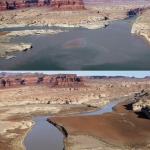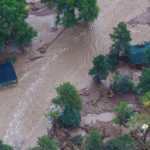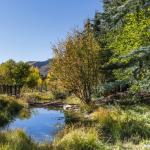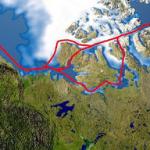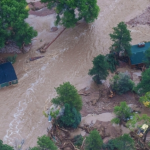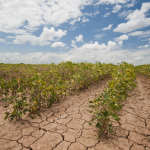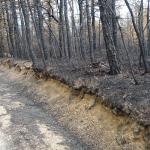Lesson Plans & Activities
A Changing Climate: Understanding Drought in Colorado (Middle School)
This lesson is best taught at the beginning of a HEART Force unit, but it can also act as a stand-alone lesson to introduce students to drought in Colorado.
Students build an understanding of drought in Colorado using multiple data sources in a jigsaw activity.
A Changing Climate: Understanding Floods in Colorado (Middle School)
This lesson is best taught at the beginning of a HEART Force unit, but it can also act as a stand-alone lesson to introduce students to floods in Colorado.
Students build an understanding of flooding in Colorado using multiple data sources in a jigsaw format.
Flood Resilience in Colorado StoryMap
This is a lesson that can be used to get ideas and prepare for the Community Resilience Expo.
Students interact with a flood StoryMap to explore the Colorado Resiliency Framework.
Northwest Passage: Then and Now
Project EXTREMES lessons were written to be stand alone lessons but can be incorporated into a larger unit.
In this lesson, students learn about some of the early explorations of the Northwest Passage, and how the changing sea ice extent has prompted new explorations of this region to transport goods from one region of the Northern Hemisphere to another.

Adapting to Extremes: Exploring the Science of Floods in Colorado (High School)
This lesson is best taught at the beginning of a HEART Force unit, but it can also act as a stand-alone lesson to introduce students to floods in Colorado.
The way we choose to design our communities has impacted community risk and vulnerability to flooding; in this lesson, students will explore this concept by analyzing environmental data to classify patterns and practice communicating their findings.
Adapting to Extremes: Exploring the Science of Drought in Colorado (High School)
This lesson is best taught at the beginning of a HEART Force unit, but it can also act as a stand-alone lesson to introduce students to drought in Colorado.
Humans have been affected by severe drought throughout history; in this lesson students explore this concept by analyzing environmental data to classify patterns and practice communicating their findings.
Soil Percolation: Where Does the Rain Go?
Project EXTREMES lessons were written to be stand alone lessons but can be incorporated into a larger unit.
This lesson activity has students conduct an experiment that reinforces one component of the water cycle.

Data Puzzle: It's All Connected
This data puzzle is a stand-alone lesson that is part of a larger collection of data puzzles.
What makes the Arctic climate system so unique is the sea ice, which influences the Arctic climate in many ways. In this Data Puzzle, students analyze authentic Arctic data to construct explanatory models for the following question, "What effect, if any, do leads (cracks in the sea ice) have on the transfer of moisture between the Arctic Ocean and atmosphere?"
